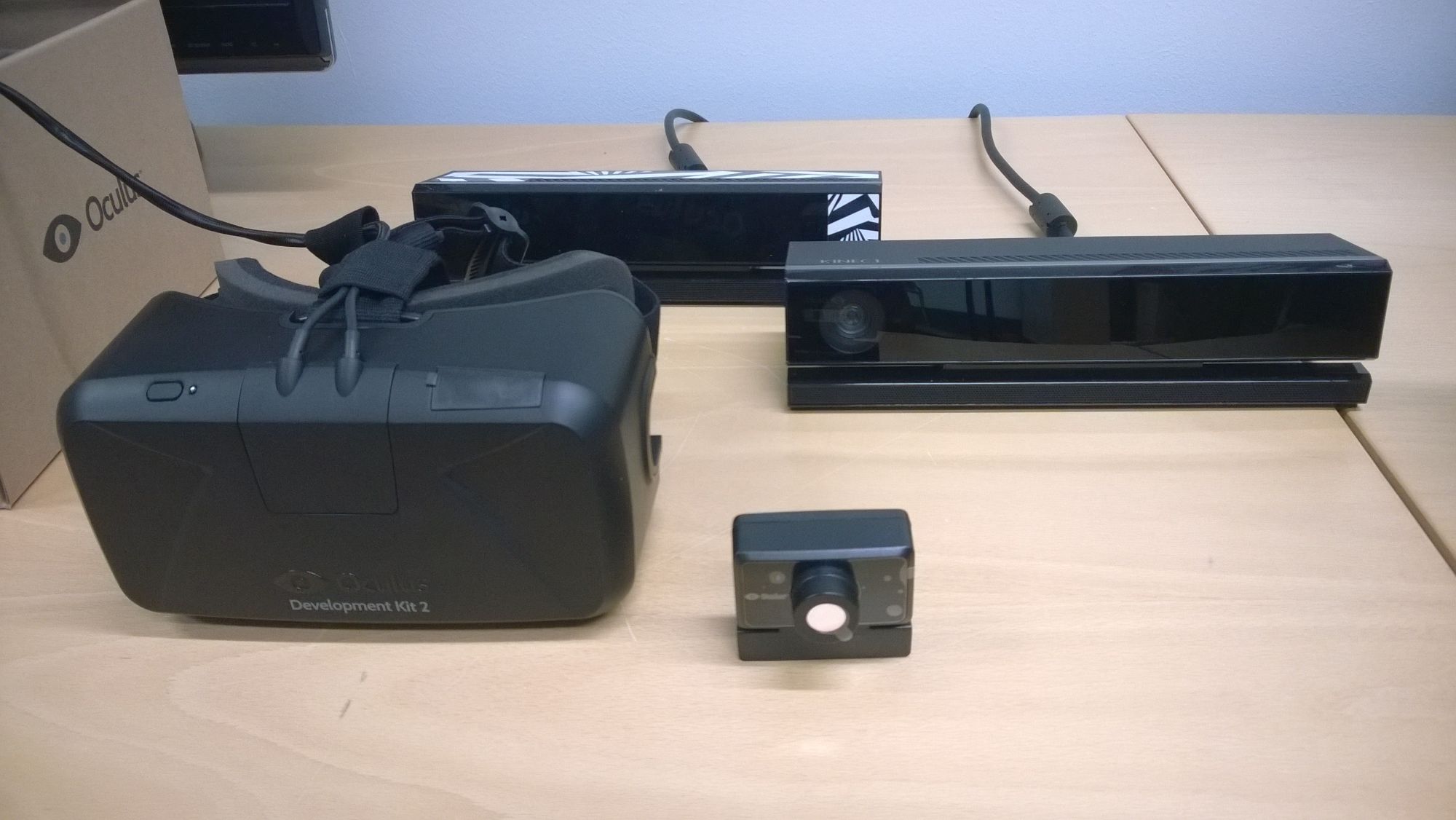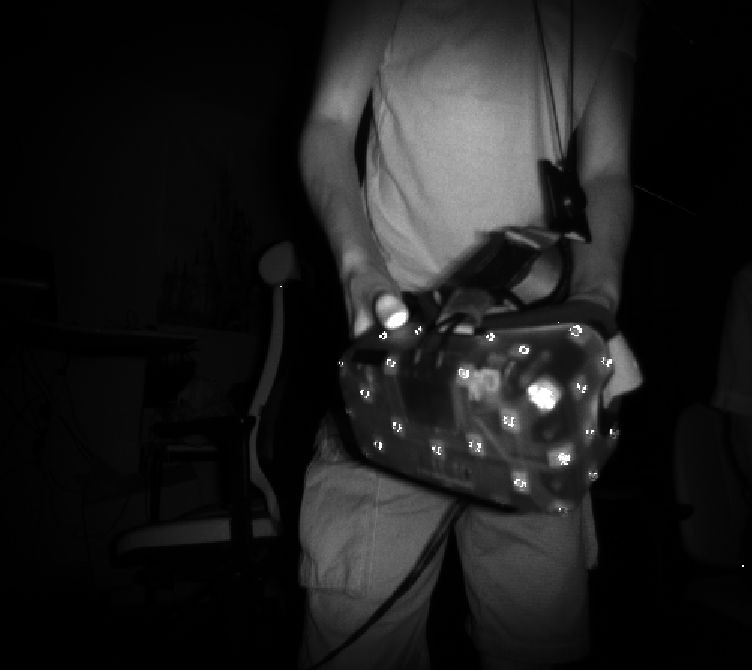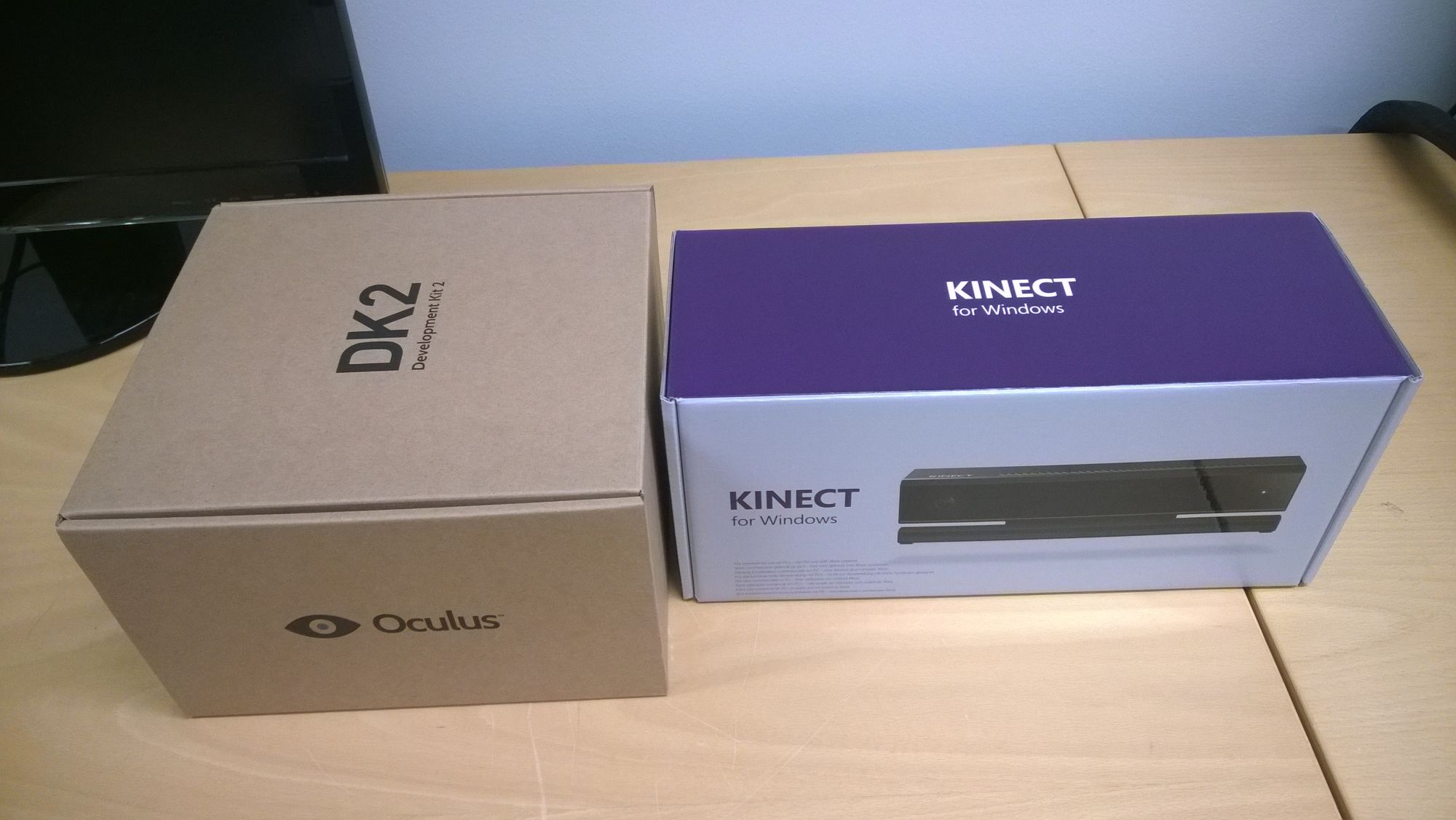We just received our Oculus Rift Development Kit 2 (DK2) head-mounted-display and are thrilled to report our experiences with it.

Rift DK2 in front left, its position tracking camera in front center, and two Kinect 2 sensors behind them.
The DK2 comes bundled with an infrared webcam that tracks the Rift’s position (and most likely helps to correct yaw drift in orientation as well). My first question upon unboxing DK2 was “Where the infrared LEDs at??”
So I pointed Kinect 2’s infrared camera at it, and took the below picture:
It seems that the LEDs are below the Rift’s exterior, which is made of (special?) plastic that lets through IR spectrum but absorbs visible light, hiding the nasty insides.
DK2 demo experiences
After solving the LED mystery, we tried the following demos:
- Oculus demo scene (comes with the Oculus Configuration Utility)
- Cyber Space
- Chilling Space
- Horse World Online 🙂
Oculus demo scene is best for checking out the tracking and image quality, as the scene is peaceful and its 3D objects are simple and elegant. Cyber Space is a virtual amusement park ride for those of us who want to explore our cyber-sickness limits, Horse World Online is only for the most hard-core horsie fans, and Chilling Space has a calm atmosphere (we didn’t notice how positional tracking was employed though).
DK2 has been out for a relatively short time, and I’m not aware of any killer apps for it yet. Personally I’m looking forward to the DK2 version of the Senza Peso opera.
In many ways Oculus Rift DK2 is superior to DK1: head position tracking is responsive and accurate, which is integral to immersion and minimizing nausea. While the screen door (pixel border) effect is still noticeable, it’s a minor nuisance as there are major improvements in other areas. DK2’s resolution is higher, its OLED-display produces a better color range, and its image is crisp because the motion blur from slow pixel color change times has improved (except for blacks). The tracking latency is still low as it should be, and the low persistence technique really seems to do the trick, considerably reducing cyber-sickness.
That’s it for now, we’ll get back to combining DK2 with Kinect 2! It’s wonderful stuff, keep your eyes on us!



Hey!!! Great review man!
Hi,
Some great work lies ahead of you!
I am still waiting for my dk2 and now I am thinking to buy a Kinect 2 for hand tracking.
Do the DK2 IR LEDs interfere with the kinect?
V.
Hi,
We did some preliminary tests, and we didn’t notice that DK2 would interfere with Kinect 2, or vice versa.
With the arrival of the dk2, will you be updating the RUIS plugin to allow the usage of the dk2 for headtracking, and then both razer controllers for both hand movements?
Good news! Within one week we will release a new version of RUIS that supports DK2 and Kinect2. Razer controller support (also for both hands) is already there, and we haven’t changed that.
We have a calibration process to get DK2 working in the same coordinate system with Kinect 1, Kinect 2, and PS Move. But for Razer Hydra, you need to place the DK2 camera and Razer base station manually, and adjusted the coordinate system position offset in RUIS, so that the virtual Razer appears in the correct location when viewed with DK2.
Later we might include Sixence’s STEM in our supported devices, if they ease up their current, “All rights reserved” software license (which wouldn’t let us to distribute RUIS in Unity Asset store).